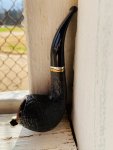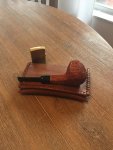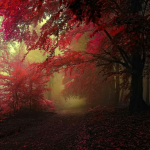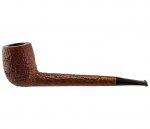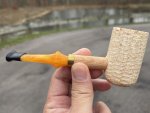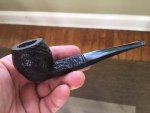Now smoking Watch City Double Barrel Christmas 2020 in a 2003 medium bent Ural meer with a lined and etched egg shaped bowl with a silver band and a pearl brown acrylic saddle stem. Working at getting a handle on this complex, tasty, spicy aromatic.
***What Are You Smoking, December 2020?***
- Thread starter JimInks
- Start date
You are using an out of date browser. It may not display this or other websites correctly.
You should upgrade or use an alternative browser.
You should upgrade or use an alternative browser.
SmokingPipes.com Updates
Watch for Updates Twice a Week
- Status
- Not open for further replies.
Old Joe Krantz, whilst giving the stink eye to the water company crew who turned off the water to the area, without warning.
"I have important business of cleaning jars for tobacco storage, with a shipment slated to be in at noon!"... Water man just stares....
?
"I have important business of cleaning jars for tobacco storage, with a shipment slated to be in at noon!"... Water man just stares....
?
Now smoking Ken Byron Ventures Experimental Void Ration bright Va. stoved Plug #1 in a very small slight bent black sandblasted Smokers Forum.UK 2015 POTY Chris Askwith Prince 5 with a tapered black acrylic stem with a flared bit.
Starting the week (ironically I guess) with some GLP's Quiet Nights in this resto S. Bang brandy:


All caught up on work for the moment...enjoying some GLP Cairo in an MM Legend. I foresee a BLT in the near future.
@virkia Did you actually smoke the one with the horn stem?To misquote Monty Python "And now for something a bit different".
There was a time when the enormous choices of today in the area of different pipe shapes, what pipes are made of and bowl sizes was limited to just one shape and one material - clay.
The smaller than usual bowl size and thinner than usual shank and stem of the pipe I posted above - compared to most other briars I've seen of that period - makes me thing of a pipe more suited for a woman but compared to early clay pipes it's a big bowl.
In the time of James I (1566-1625) tobacco was brutally expensive. He's the one that initiated probably the first 'tax for health reasons' and raised tobacco tax 40-fold from 2 to 82 pence per pound, making tobacco more expensive than silver with the result that the bowls were really small compared to even fifty years later.
Below are two examples of excavated clays from that period - one without a maker's initials or trademark (not unusual for that period when less than 10% of pipes were stamped with either) - and the other with a maker's mark:-
1) Circa 1600-1610 - a previous owner in the middle of the 19th cent. has thoughtfully had the clay mounted with a horn stem.
2) Circa 1580-1590 - Incuse W.B (William Batchelor 1580-1620 / 1619-1635) on the underside of the heel.
View attachment 54024
I wouldn't mind smoking it - it would be just right for English Civil War re-enactment.
I used to have an English Civil War clay pipe which I smoked when I went to see the Sealed Knot and Cavendish's Horses at Bolsover Castle last year - where I found it impossible to light in all the wind - but I've sold it now!
I read it was King James I who wrote A Counterblaste to Tobacco in the 1600s - widely regarded as the first piece of anti smoking literature:

A Counterblaste to Tobacco - Wikipedia
Ashton’s Rainy Day (it’s pissing down here) in a ‘69 Donegal Rocky bent. Loving it with Lambs Navy rum.
An MM Country Gentleman containing The Amphora Burley. A fresh supply arrived in the mail before 8AM this morning. The package also contained Amphora Kentucky, Sutliff 507-C Virginia Slices, and Sutliff Elizabethan Match.
Almost half way through this bowl of Watch City Double Barrel Christmas 2020 in a 2003 medium bent Ural meer with a lined and etched egg shaped bowl with a silver band and a pearl brown acrylic saddle stem.
Nice slow smoke of University Flake in a Balandis pipe,a cup of LaLlave and not much else!
Ohh, now that's a pretty pipeRouxgaroux in a Savinelli.View attachment 54346
Moving to trying some OJK in the Pot of Gold. OMG two different type of VA/Per for sure. The burley really changes up the taste.
- Status
- Not open for further replies.







